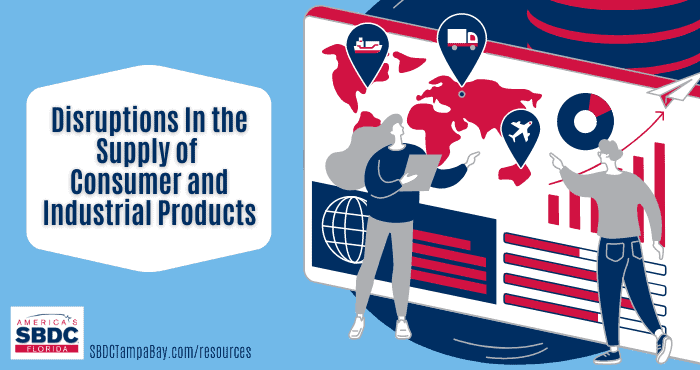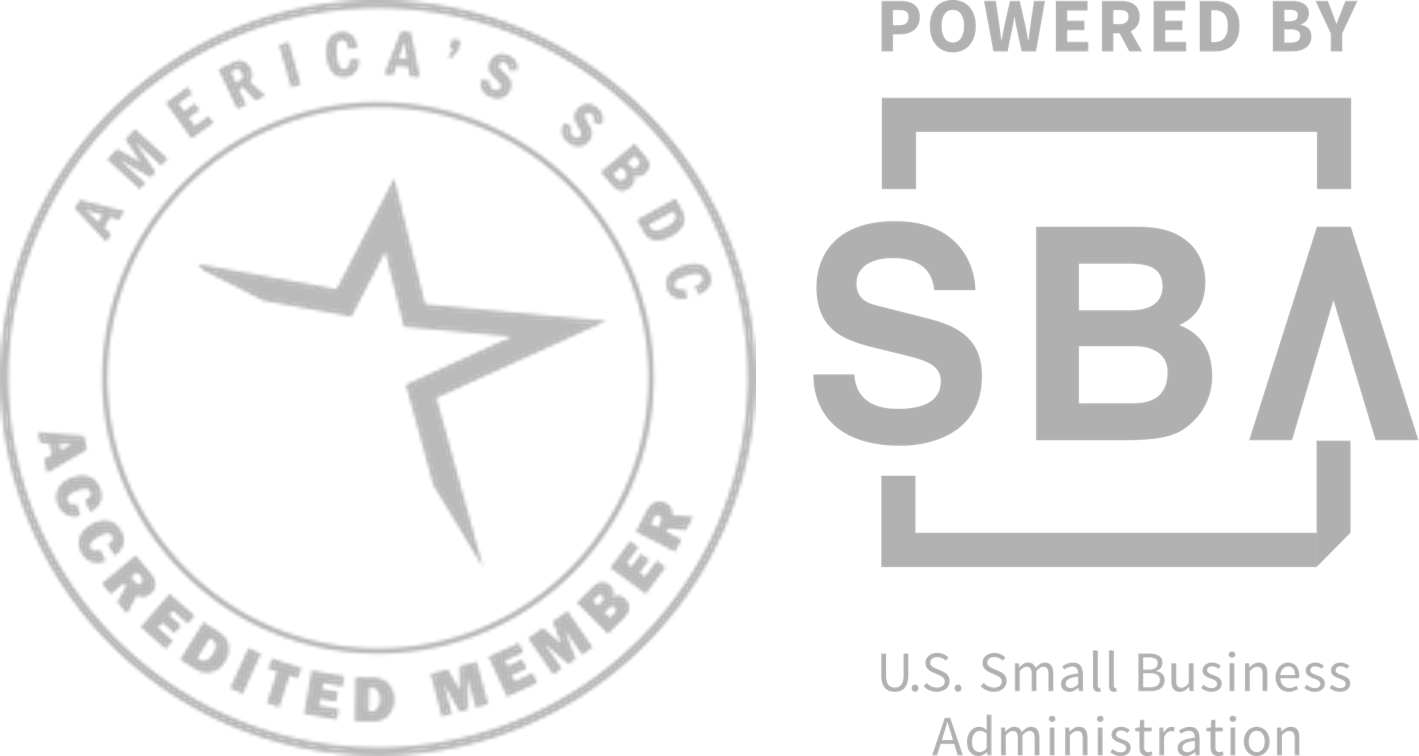How small businesses can tackle the current supply chain challenge
by Pablo Arroyo, CGBP | October 20, 2021
In the previous article, we talked about the reasons for the current supply chain bottlenecks and a return to normalization. This time, I want to talk about specific strategies for businesses to deal with this challenge and take advantage of opportunities that arise.
In 2020, existing inventories were depleted quickly as social distancing and lockdown measures were slowly lifted and manufacturers scrambled to increase production of products associated with living and working at home. These are computers, TVs, appliances, furniture, certain food products and construction materials related to home improvement projects. This scarcity of materials coupled with a shortage of shipping containers and bottlenecks at ports made things worse. The supply chain will recover; however, it will take time. In the meantime, small businesses need to make the necessary adjustments, adapt, and take advantages of opportunities this situation might bring about.
According to IBISWorld, the current dilemma is related to the aftermath of the pandemic, which will self-resolve. However, we should not confuse these short-term issues with long- term problems such as the labor skills gap in critical sectors such as agriculture, construction, manufacturing, logistics and health care. The labor shortages were already a persistent problem before the pandemic, a systemic situation that most likely will need a concerted effort such as improving STEM education and training. However, we need to redefine the process of attracting and retaining employees as the labor market becomes more competitive. IBISWorld in their whitepaper Potential Bottlenecks to Recovery, the Supply Chain Riddle and Credit Risk, explains how labor shortage and supply chain risk factors can be quantified across several industries.
Some of the strategies that small business can utilize to face the supply chain situation is to re-evaluate strategic plans, implement supplier diversification schemes and analyze supplier risks more closely. Currently, it is more advisable to rely on multiple suppliers than depending on one. At the same time, analyzing alternate products or components can be a wise strategy. Euromonitor International identified five key themes in their article B2B Supply Chains-Best Practices to Navigate Through the Pandemic:
- Redesigning a Crisis Proof Supply Chain
- Increasing Visibility Across Supply Chain
- Collaboration-Driven Success
- Monitoring & Adapting Roles of Products and Services
- Embracing Digital Solutions & Automation Tools
A crisis proof supply chain is one that focuses on core products, can shift to a direct-to-consumer model, responds to the needs of end consumers and reduces waste and warehousing costs. For example, a food supplier to the restaurant trade is now able to provide the same products adapted to the retail market and to individual consumers through e-commerce. The more visible we are to the end consumers, the more reactive we can be towards their changing consumption patterns.
Also, seamless and constant communication with customers and suppliers in anticipation of unexpected events and engaging with supply chain players in a collaborative fashion to develop synergies and strengths can be critical. A strong partnership with the IT vendor can be crucial.
Another strategy is to repurpose products for new applications and introduce new services we did not envision before while embracing technologies such as e-commerce and automation. Being able to continue serving clients from our warehouse as well as our storefront is imperative.
It is evident that even with the supply chain issue resolved, there will be several permanent repercussions in the business environment in which we operate. We will face higher production costs, higher inventory and raw material costs and higher labor costs. This will translate into upward pressure on prices that consumers will face.
As a business, we need to constantly monitor changes in costs and adjust prices accordingly, while remaining competitive and offering exceptional differentiated value to customers. Saket Toshniwal from Phiture, has defined several pricing strategies that we can implement in our operations. These are subscriptions, discounts, price anchoring, price bundling and installment pricing. With a subscription, we can show a weekly/daily equivalence portraying a lower cost. Discounts can always work with volume purchases and due date/target date sign-up and can be applied in percentage terms for lower priced items. With price anchoring, we put the item next to a more expensive option, contextualizing the price as more reasonable. Price bundling combines several products into one package and encourages sampling and exploration. Installment pricing works best with higher ticket items, making it more affordable. Adding zero interest and processing fees makes items more appealing.
We certainly need to constantly monitor costs and in the case of services that will be delivered later such as contractors, we might need a clause stating that quoted prices are subject to change based on fluctuations of raw materials.
In the end, the world post-COVID-19 will never be the same again. The resilient business will be adopting digital strategies, conducting better planning and diversifying its supplier base with local and regional players and effectively attracting and retaining employees. The key word here is resiliency. Being able to adapt, to make the necessary changes and establish operating procedures that guarantee the continuity of our business will be standard components of the business planning process.





Pablo Arroyo, MBA, CGBP, CME
Arroyo, Consultants, International Consultants 2, International Trade, TampaNASBITE Certified Global Business Professional (CGBP), Florida SBDC at USF, Tampa
Specialties: International Trade, Marketing, Business Planning, Startup Assistance
Pablo Arroyo has 17 years of experience in business development as an owner and business consultant in the public and private sectors. He is a Certified Global Business Professional (CGBP) and a Certified Marketing Executive (CME). He holds a bachelor’s degree in animal science, concentrating on international agriculture and agriculture economics, from the University of Missouri, and an MBA from the University of South Florida in marketing and international business. Arroyo was involved in strategic market expansion for companies from diverse sectors with emphasis on manufacturing, technology, agribusiness, food, tourism, hospitality, entrepreneurship and value-added enterprise development. Originally from Puerto Rico, he is fluent in Spanish and English.